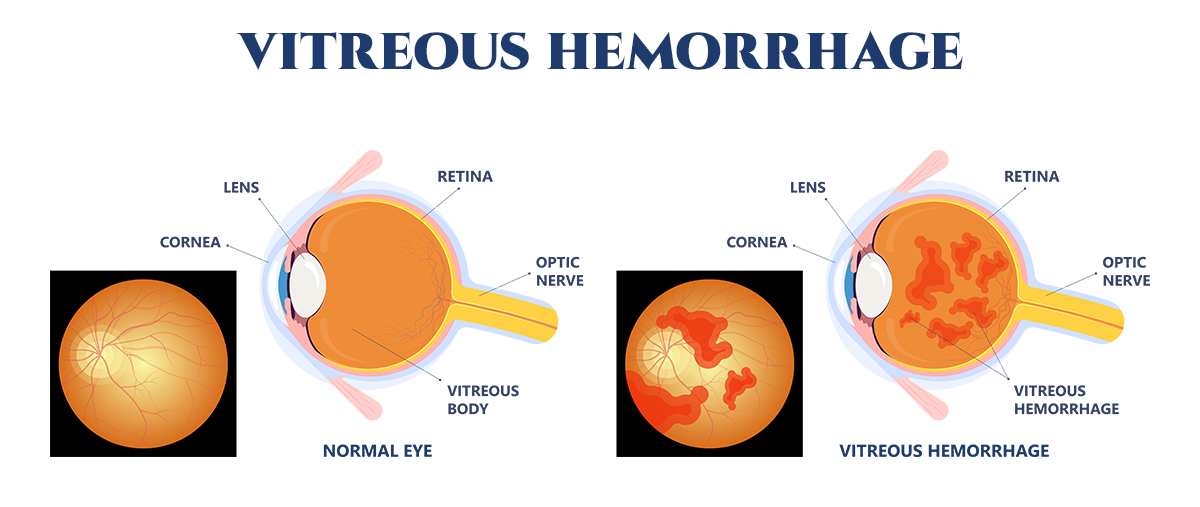
Vitreous Hemorrhage
A vitreous hemorrhage is a condition in which there is bleeding into the vitreous humor, the clear, gel-like substance that fills the inside of the eye. This can occur as a result of injury or trauma to the eye, diabetic retinopathy, retinal tears or detachment, vein occlusions, age-related macular degeneration, or other underlying ocular conditions.
The vitreous of your eye is made up of 99 percent water – the remaining 1 percent is your own natural hyaluronic acid and collagen. The inside of the eye is the container for this gelatinous fluid which allows light to pass through it while it provides the nutrients your eye needs to function properly. It helps your eyes maintain their shape as it adheres to the back of the eye protecting the optic nerve.
A vitreous hemorrhage can be minor or severe. Causes of this condition include injury to the eye, abnormal blood vessels, or ruptured blood vessels. For people under the age of 40, the most common cause of this condition is an injury that causes intact vessels to break or burst. Common precursors to vitreous hemorrhage to otherwise normal blood vessels include diabetic retinopathy, retinal tears, retinal detachment, and retinal vein occlusion.
Vitreous Hemorrhage Diagnosis
Symptoms of a vitreous hemorrhage can include sudden, severe vision loss, seeing floaters or flashes of light, and a curtain or veil-like obstruction of vision.
Depending on the amount and location of bleeding, a vitreous hemorrhage may be partial or complete and can range from mild to severe. Patients presenting with such vision problems may be asked about other existing medical conditions.
Treatment for Vitreous Hemorrhage
In some cases, the hemorrhage may clear up on its own as the blood is absorbed by the body. Depending on the severity of your condition and responsiveness over time, we will monitor your condition until your vision has been restored.
In other cases, surgical intervention may be necessary to remove the blood or repair the cause of the bleeding. This may involve a procedure called vitrectomy, in which the vitreous gel inside the eye is removed and replaced with a clear solution. Laser therapy may also be used to target the primary cause of the hemorrhage. Prompt evaluation and treatment are important to prevent permanent vision loss.
South Carolina Retina Institute is well recognized for its expertise in retinal care. Our skilled Vitreoretinal Surgeon, Dr. Nicolas Marchese, is board certified in the treatment of visual conditions, eye diseases, and surgery of the vitreous and retina. Our knowledgeable SCRI staff is dedicated to keeping up with the latest medical breakthroughs and providing you with strategies that can increase your ability to manage or overcome conditions affecting your vision.
